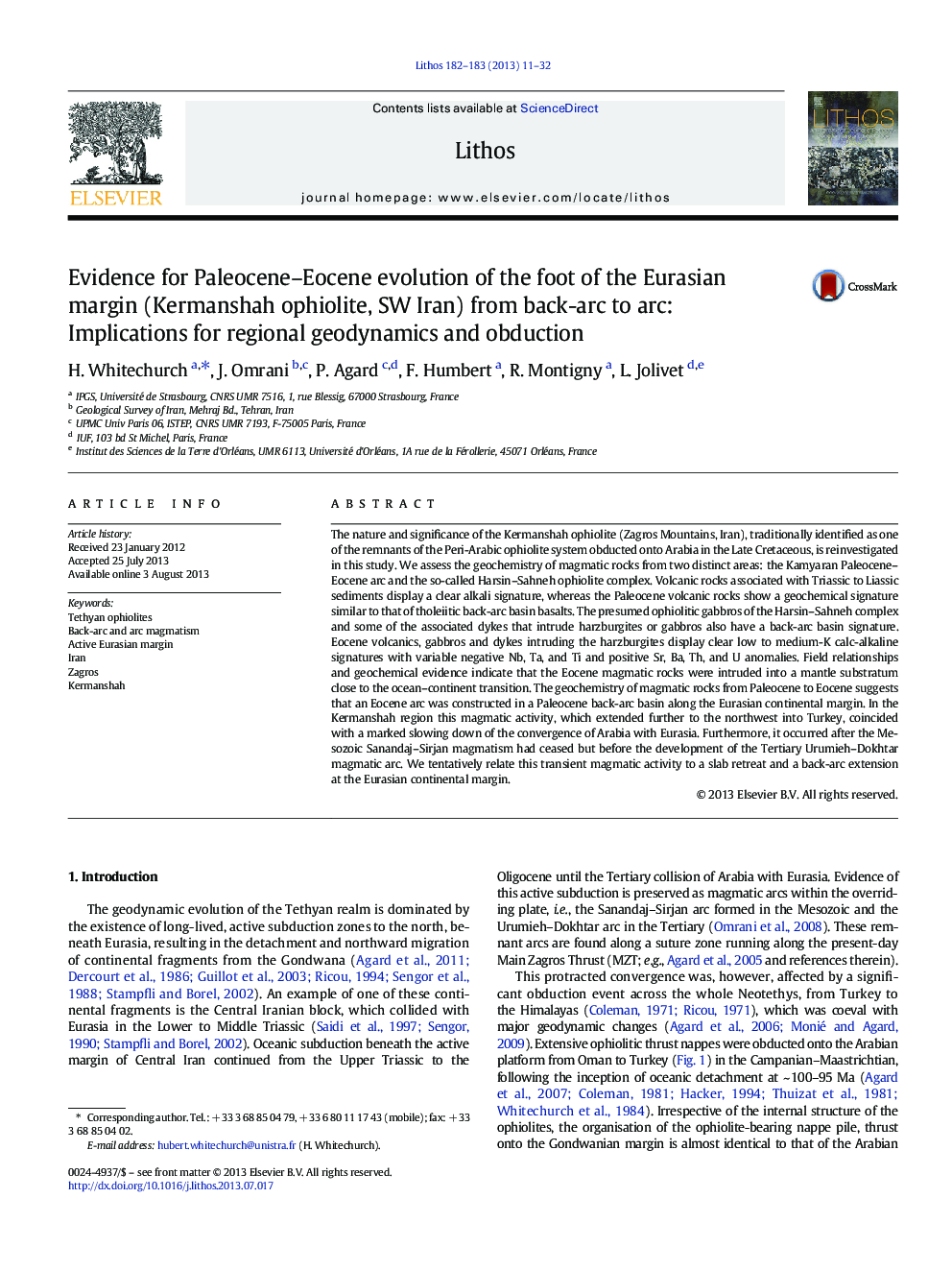| کد مقاله | کد نشریه | سال انتشار | مقاله انگلیسی | نسخه تمام متن |
|---|---|---|---|---|
| 6440825 | 1638684 | 2013 | 22 صفحه PDF | دانلود رایگان |
عنوان انگلیسی مقاله ISI
Evidence for Paleocene-Eocene evolution of the foot of the Eurasian margin (Kermanshah ophiolite, SW Iran) from back-arc to arc: Implications for regional geodynamics and obduction
ترجمه فارسی عنوان
شواهد تکامل پالئوسن-ائوسن در پای حاشیه اوراسیا (افیولیت کرمانشاه، سوئیس) از عقب به قوس: پیامدهای ژئودینامیک منطقه ای و اجتناب
دانلود مقاله + سفارش ترجمه
دانلود مقاله ISI انگلیسی
رایگان برای ایرانیان
کلمات کلیدی
افیولیت تتیان، ماگماتیسم قوس پشت و قوس، حاشیه اوراسیایی فعال، ایران، زاگرس، کرمانشاه،
موضوعات مرتبط
مهندسی و علوم پایه
علوم زمین و سیارات
ژئوشیمی و پترولوژی
چکیده انگلیسی
The nature and significance of the Kermanshah ophiolite (Zagros Mountains, Iran), traditionally identified as one of the remnants of the Peri-Arabic ophiolite system obducted onto Arabia in the Late Cretaceous, is reinvestigated in this study. We assess the geochemistry of magmatic rocks from two distinct areas: the Kamyaran Paleocene-Eocene arc and the so-called Harsin-Sahneh ophiolite complex. Volcanic rocks associated with Triassic to Liassic sediments display a clear alkali signature, whereas the Paleocene volcanic rocks show a geochemical signature similar to that of tholeiitic back-arc basin basalts. The presumed ophiolitic gabbros of the Harsin-Sahneh complex and some of the associated dykes that intrude harzburgites or gabbros also have a back-arc basin signature. Eocene volcanics, gabbros and dykes intruding the harzburgites display clear low to medium-K calc-alkaline signatures with variable negative Nb, Ta, and Ti and positive Sr, Ba, Th, and U anomalies. Field relationships and geochemical evidence indicate that the Eocene magmatic rocks were intruded into a mantle substratum close to the ocean-continent transition. The geochemistry of magmatic rocks from Paleocene to Eocene suggests that an Eocene arc was constructed in a Paleocene back-arc basin along the Eurasian continental margin. In the Kermanshah region this magmatic activity, which extended further to the northwest into Turkey, coincided with a marked slowing down of the convergence of Arabia with Eurasia. Furthermore, it occurred after the Mesozoic Sanandaj-Sirjan magmatism had ceased but before the development of the Tertiary Urumieh-Dokhtar magmatic arc. We tentatively relate this transient magmatic activity to a slab retreat and a back-arc extension at the Eurasian continental margin.
ناشر
Database: Elsevier - ScienceDirect (ساینس دایرکت)
Journal: Lithos - Volumes 182â183, December 2013, Pages 11-32
Journal: Lithos - Volumes 182â183, December 2013, Pages 11-32
نویسندگان
H. Whitechurch, J. Omrani, P. Agard, F. Humbert, R. Montigny, L. Jolivet,
